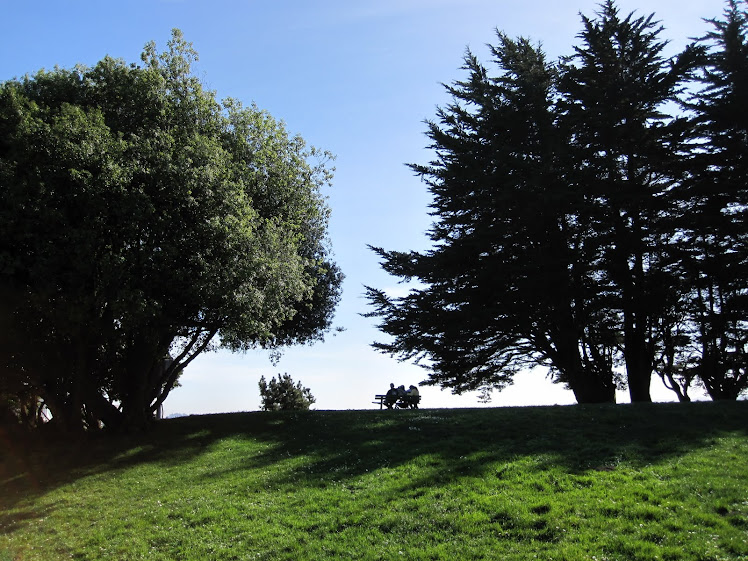The first thing I check in the daily paper each morning is the weather page. I like to see what the weather was in San Francisco and what it will be. I then look at the surrounding area temperatures. After that I check state, national, and international weather conditions. It makes me feel like I’m traveling around the world each morning. I am a numbers man so I like seeing the increases and decreases, the record highs and lows. And temperatures seem so absolute, so objective, but are they?
Not only do the predictions for the day’s weather usually end up being wrong, I have come to realize that even the reports of the previous day’s actual weather are also suspect. After watching the evening news and weather on a few channels and then seeing the temps in the paper the next day, I find that there can be three or four different temperatures for the same place on the same day. And ofttimes none of the numbers agree with the temperatures that my car’s weather monitor reports.
In addition to the problems with inconsistency there is another of variation within a location. San Francisco weather can be cold and foggy by the ocean while being warm and sunny in the Mission. The high temperature can range up to 20 degrees in the two locations on the same day, so reporting only one temperature for the city must be wrong.
And then there is the fact that the very same temperature reading is not necessary the same temperature to the body. It can be 60 and sunny or it can be 60 and foggy or windy. To the mercury, it is the same. To the body, it is very different. In the East Coast and Mid-West, they give the temperature and then the chill factor.
The same temperature also varies with the degree of humidity. A day of 80 degrees can be unbearable in a humid New York City, while being very warm in San Francisco, and not bad at all in arid Tucson or Las Vegas.
I believe that we must change the way we measure and therefore report weather. In places like San Francisco with micro climates, the weather should be reported in a range. Instead of saying that it was a high of 68 degrees yesterday, the report should show the range of highs from the coldest part of the city and the warmest. These reports should factor in the effects of humidity, wind and fog on the effective temperature. This should also be done for all other areas as well. Tucson would look cooler and New York would appear warmer, at least in the summer, while the Mid-West would look a lot colder in winter. And San Francisco would almost always appear a lot cooler than the raw numbers now indicate.
I would love to see the evening news have a segment on national or even international weather. Weather reports have become not only inaccurate but also provincial, concerned only with the surrounding area as though the rest of the world doesn’t really matter. (It’s like going to a restaurant where the food is so bad you don’t mind the poor service.) While it was 70 degrees yesterday in San Francisco what was it like in Paris or Tucson or Venice or the Virgin Islands or Ventura. (The Chronicle has stopped telling us about Ventura and has never mentioned Venice or the Virgin Islands. Maybe they don’t like places that begin with the letter V. They only mention Vienna and Vancouver, probably because they feel that they have to.)
I would also enjoy seeing all the weather reports coordinated so they do not differ so. The T.V. news and the daily papers should all get their numbers from the same place and that place should be accurate. So if the evening news reports that San Francisco was from 62 at the coast to 74 in Noe Valley, the other stations and the Chronicle should report the same numbers, otherwise none has any meaning.
And they should stop saying that there is a certain percentage chance of rain. It’s like saying that something might happen or it might not. That’s always true, except when it isn’t.
But perhaps most importantly, the weather experts should try to do more to actually fix it. Why is there no fog from Sneath Lane south or north of Corte Madera? Can their fog resistant characteristics be used to stop fog in San Francisco? And don’t say that you like the fog, I beg you. It is cold, wet and gray. It is nature’s equivalent of sadness and depression, just as sunshine and warmth equal love and as the wind and cold are bitterness and indifference. But as I promise all those who claim that they would miss the fog, the weather experts could get rid of fog and then maybe give it back just to those who want it.
With all these changes made in the prediction and description of weather by the media and improvements in our actual weather conditions made by our trusty meteorologists, we could finally have weather that we can believe in.

No comments:
Post a Comment